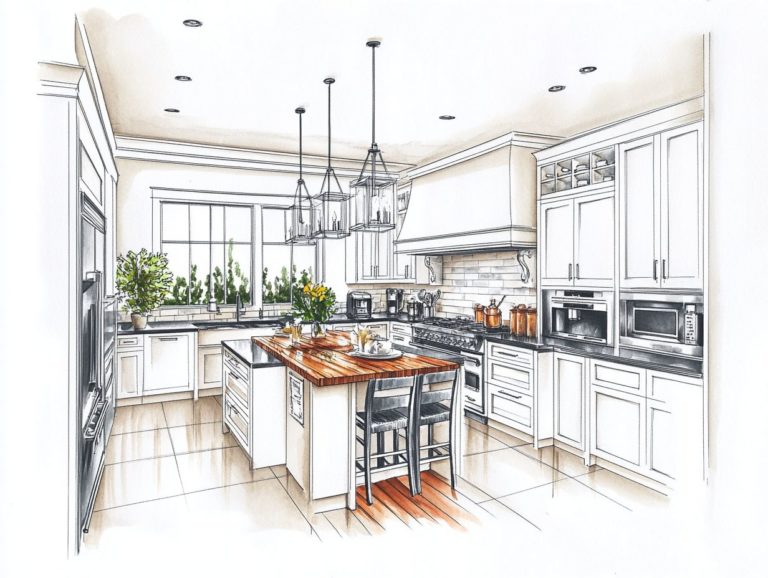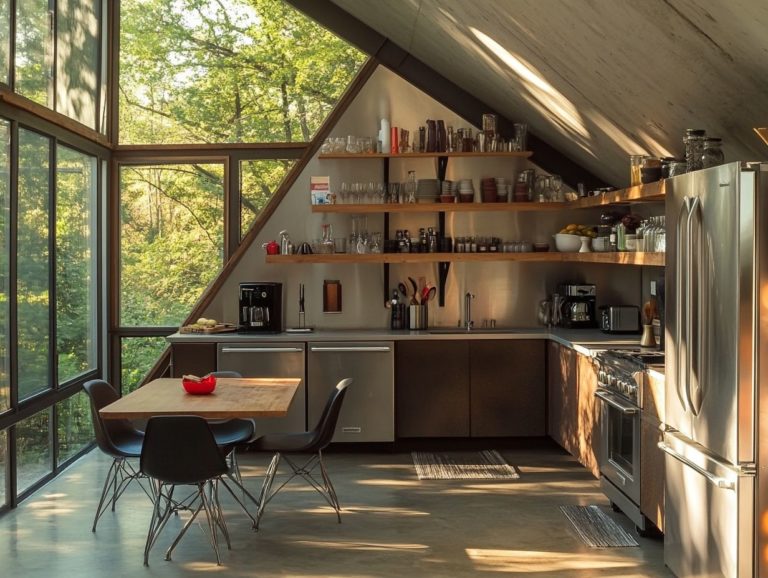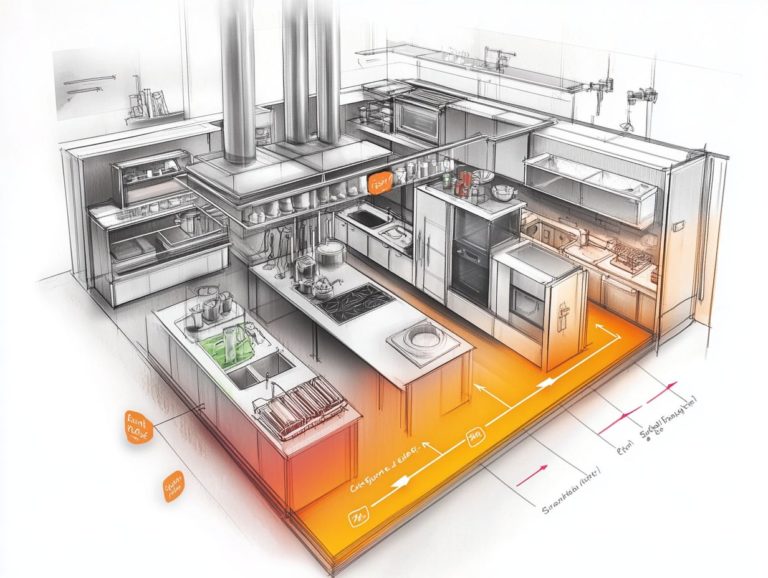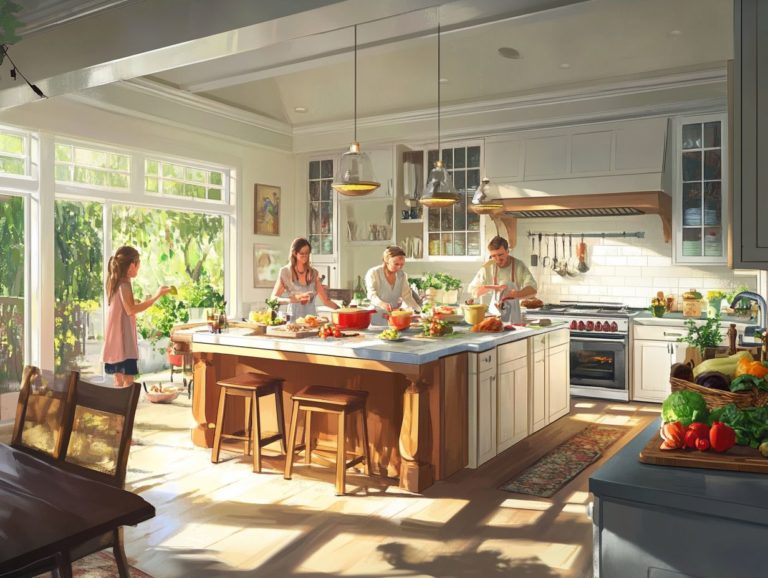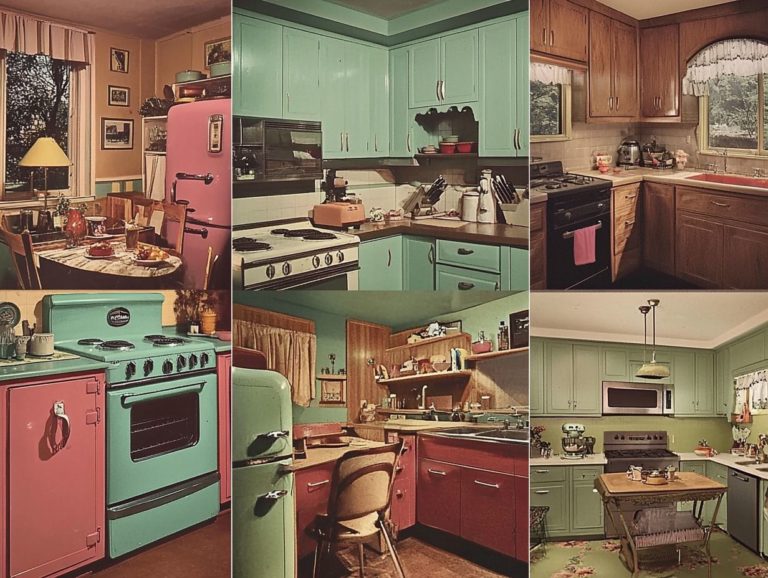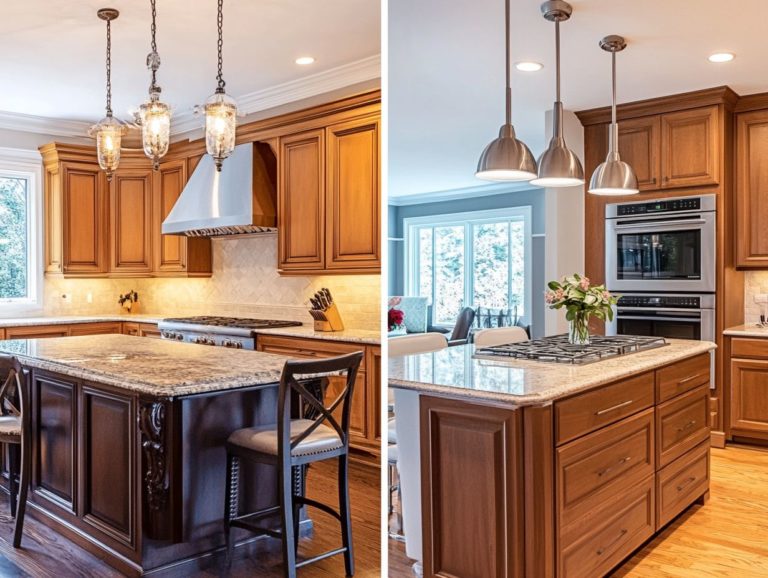Best Layouts for Sustainable Kitchen Designs
Creating a sustainable kitchen benefits your home and the planet.
This article covers sustainable kitchen design principles, eco-friendly materials, and energy-efficient appliances.
You’ll learn how to enhance your cooking space with natural light, indoor plants, and water-saving features.
We will explore waste management strategies to help you reduce your environmental footprint.
Start your exciting journey to transform your kitchen into a sustainable sanctuary!
Contents
Key Takeaways:
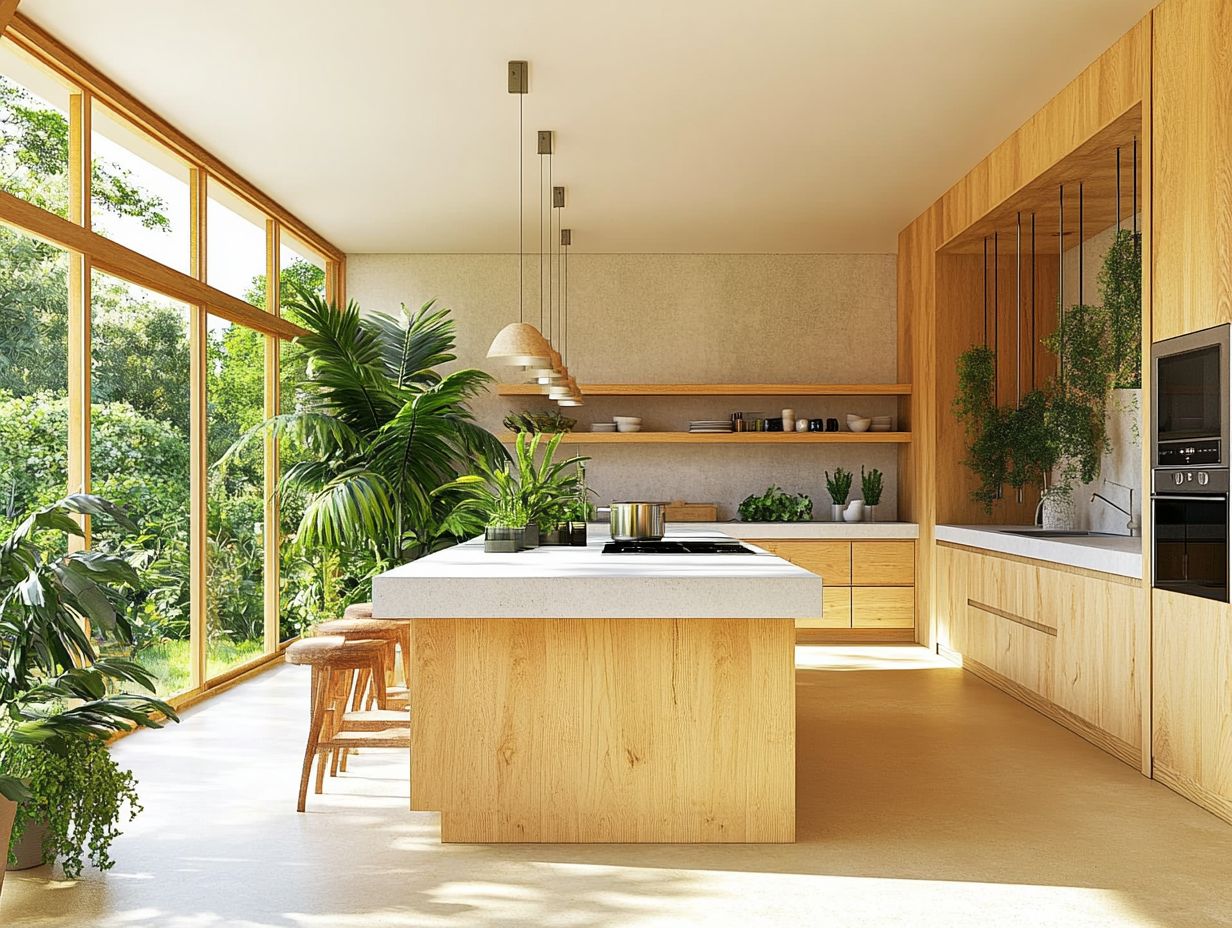
Choose sustainable materials like bamboo or recycled options to reduce environmental impact.
Opt for energy-efficient appliances to cut energy use and save money.
Incorporate natural light and proper ventilation to lessen the need for artificial lighting.
Sustainable Kitchen Design Basics
Creating a sustainable kitchen means considering design aspects that support eco-friendliness and a modern look.
Choose reclaimed materials and energy-efficient appliances to minimize environmental impact.
Designers like Helen Parker and Stephen Nash showcase vintage furniture and bamboo treatments that combine style with sustainability.
Key Principles and Considerations
Sustainable kitchen design focuses on waste reduction and local sourcing.
Mindful consumption helps you minimize waste and enhances your kitchen’s sustainability.
Locally sourced materials boost local economies and cut transportation emissions.
Innovative techniques like composting stations and modular cabinetry improve functionality and eco-friendliness.
These strategies promote responsible practices and strengthen your connection to your resources.
Eco-Friendly Materials for Kitchen Design
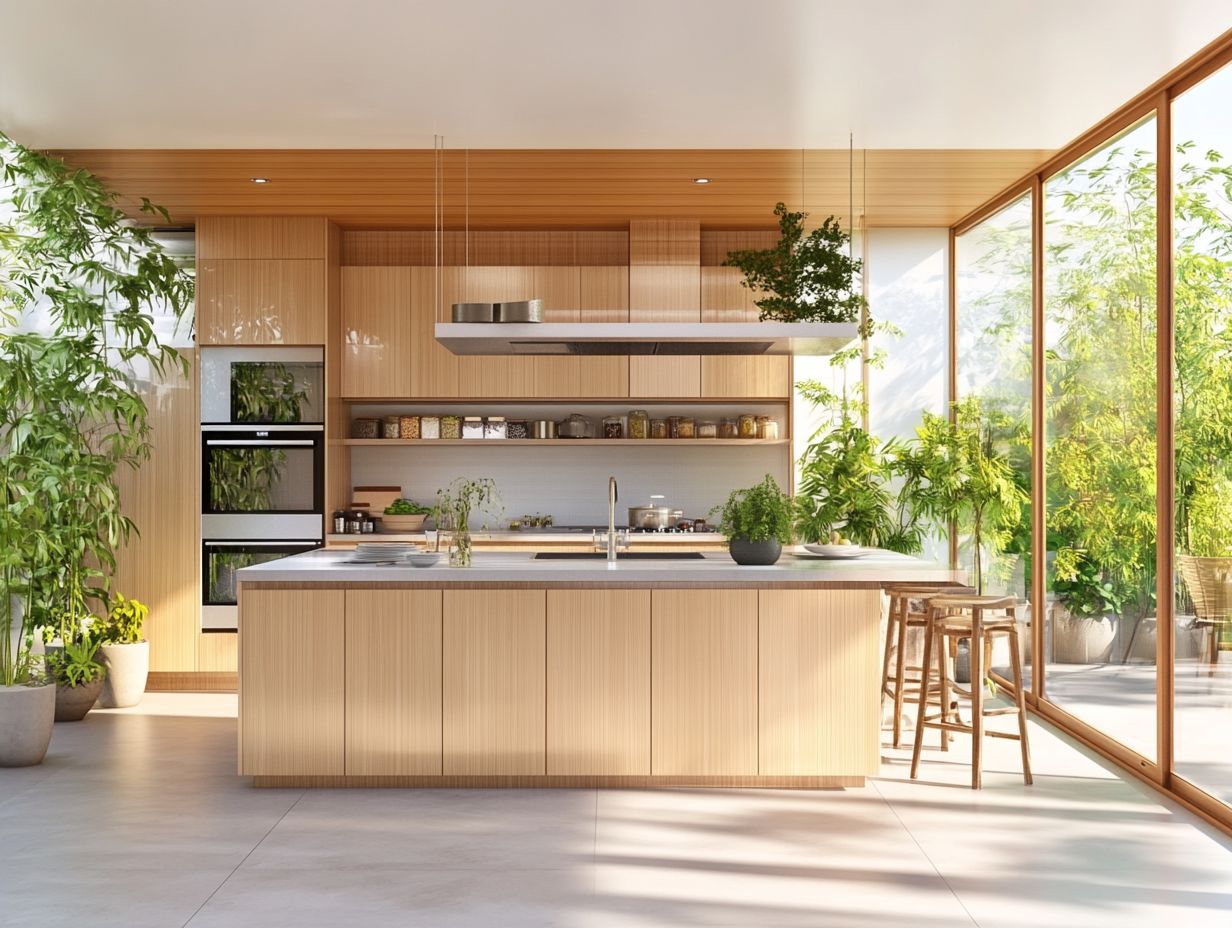
Choosing eco-friendly materials is vital for a sustainable kitchen that balances beauty and practicality.
Using sustainable timber, eco-friendly paints, and innovative flooring can greatly reduce your renovation’s carbon footprint.
Consider worktops made from Caesarstone or Silestone; they combine durability with recycled materials.
By including these eco-conscious elements, you can create a kitchen that reflects modern design and a responsible lifestyle.
Sustainable and Renewable Options
When you’re exploring sustainable and renewable options for your kitchen design, reclaimed materials and bamboo combine beautifully as exceptional choices that align environmental responsibility with aesthetic allure.
These materials not only deliver a striking visual impact. They also help reduce your carbon footprint during the manufacturing process. Take reclaimed wood, for instance; it can be transformed into stunning cabinetry, countertops, and flooring, adding a unique charm that new materials often do not provide.
Bamboo products are known for their strength. They make durable options for shelving and tabletops. Innovative brands like Modular One are leading the charge by seamlessly incorporating these materials into modern kitchen designs, ensuring that energy-efficient appliances harmonize flawlessly with this sustainable ethos.
By making such thoughtful choices, you can fully embrace a greener lifestyle while relishing the modern conveniences that energy-efficient technologies provide.
Energy-Efficient Kitchen Appliances
Energy-efficient kitchen appliances are essential in minimizing your household’s overall energy consumption while delivering exceptional performance and convenience.
Choosing the Right Appliances for Sustainability
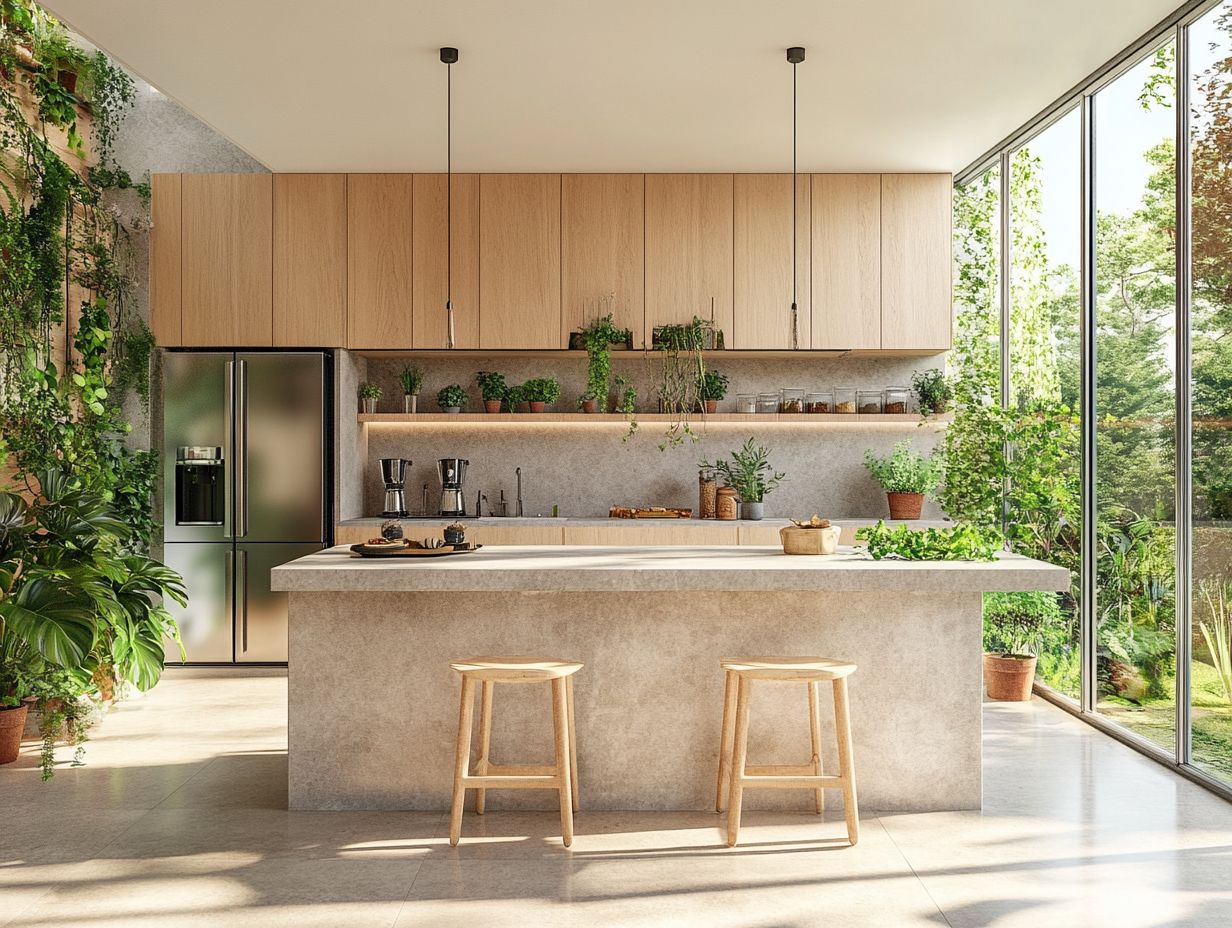
Choosing the right appliances for sustainability means focusing on options that minimize waste and enhance energy efficiency, all without sacrificing modern design.
By opting for energy-efficient models, you can significantly cut down on your utility bills while championing environmentally responsible practices. Incorporating features like LED lighting helps lower your energy consumption and brings a sleek, contemporary touch to your kitchen.
Exploring second-hand kitchens presents a unique opportunity to invest in high-quality materials while promoting waste reduction. This approach diverts perfectly usable appliances and fixtures from landfills, supporting a more sustainable lifestyle.
Style and sustainability can happily coexist in every home!
Maximizing Natural Light and Ventilation
Maximizing natural light and ventilation in your kitchen not only elevates its visual appeal but also plays a crucial role in enhancing energy efficiency and promoting overall sustainability.
Design Strategies for Natural Light and Airflow
To maximize natural light and airflow in your kitchen design, consider incorporating elements like bamboo window treatments and neutral cabinetry. This approach creates a bright and airy atmosphere that elevates the overall vibe of the space.
These strategies not only enhance visual appeal but also foster a serene ambiance. Bamboo window treatments, celebrated for their environmentally friendly features, allow sunlight to filter through while offering the necessary privacy—making them an ideal choice for any modern kitchen.
When combined with soft-toned cabinetry, the design feels cohesive and inviting. This thoughtful pairing promotes sustainability and encourages a seamless flow between indoor and outdoor areas, ultimately crafting a warm and welcoming environment that is both functional and visually stunning.
Incorporating Indoor Plants
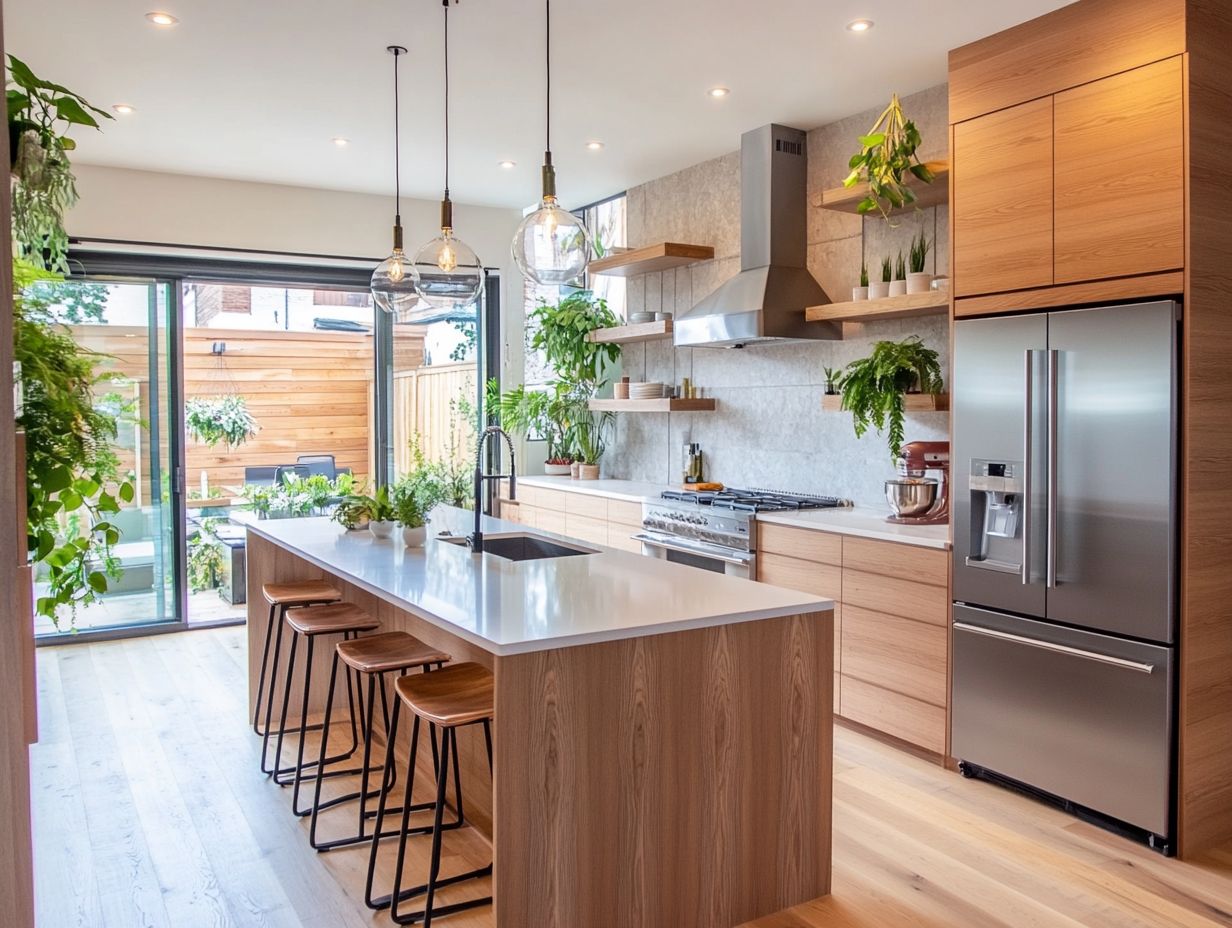
Incorporating indoor plants into your kitchen design is not merely a trend; it’s a sustainable choice that brings many benefits, such as enhanced air quality and an elevated aesthetic appeal.
Benefits and Tips for Adding Greenery
- Enhanced aesthetics
- Improved air quality
- A richer connection to sustainable practices
By incorporating a variety of plants, such as herbs and succulents, you can elevate the overall ambiance while fostering a sense of well-being and mindfulness in your culinary space.
Opting for low-maintenance varieties ensures that these green companions thrive amid the hustle and bustle of daily life. Selecting plants that purify the air contributes to a healthier cooking environment, transforming your kitchen into more than just a meal prep area—it becomes a sanctuary of sustainability.
Displaying these plants in stylish pots allows you to seamlessly blend modern design elements with eco-friendliness, aligning beauty with your commitment to a greener lifestyle.
Start incorporating these changes today for a more sustainable kitchen!
Water-Saving Features in the Kitchen
Incorporating water-saving features in your kitchen is a commitment to reducing waste and fostering sustainability. This focus on water conservation elevates your space while prioritizing the planet.
Efficient Fixtures and Practices
Implementing efficient fixtures like water-saving faucets significantly boosts sustainable kitchen practices. You can also install toilets that use different amounts of water for liquid and solid waste to optimize your home’s water usage.
Consider smart irrigation systems. These systems deliver water only when needed, based on weather conditions and soil moisture, which greatly reduces outdoor water waste.
These advancements save water and beautifully complement energy-efficient appliances, creating a cohesive approach to sustainability in your kitchen design.
Embracing these fixtures creates an environment that prioritizes responsible resource management while enhancing your home’s functionality and aesthetic appeal.
Waste Management in Sustainable Kitchens
Effective waste management in sustainable kitchens focuses on minimizing waste and encouraging recycling. This approach fosters an eco-friendly kitchen environment aligned with a greener lifestyle.
By adopting these practices, you help create a sustainable future while enhancing your kitchen’s functionality and appeal.
Reducing, Reusing, and Recycling in the Kitchen
The principles of reducing, reusing, and recycling can greatly enhance your kitchen’s sustainability. Setting up designated bins for compost and recyclables makes a meaningful impact in your daily routine.
Choosing sustainable wood for renovations lessens your environmental footprint while adding beauty and durability to your space. Opting for glass containers minimizes plastic waste and promotes a reduction mindset.
Implementing a straightforward waste separation system gives you the power to maximize recycling efforts and compost organic matter. These adjustments support the planet and nurture mindfulness in your consumption habits.
